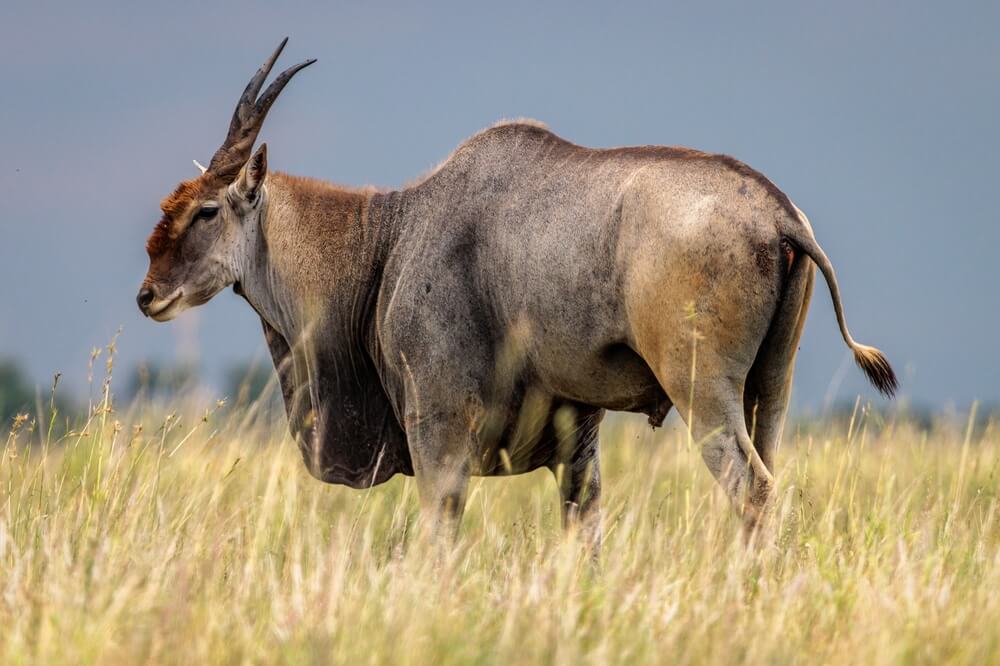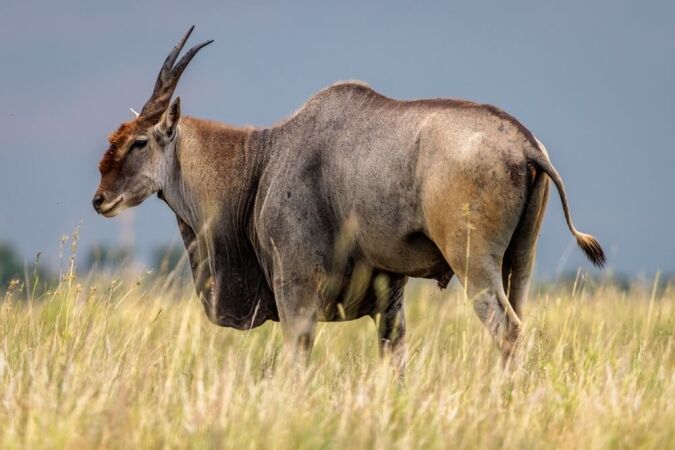

When you talk about big game hunting, there is simply no larger African plains game trophy than that of the mighty Eland (Taurotragus oryx), the world’s largest antelope. Also known as the Cape Eland, this majestic antelope is native to southern and eastern Africa. It remains the pinnacle of African plains game hunting and a definite pick on many hunters’ bucket lists when hunting in South Africa.
The eland’s habitat includes woodlands, plains, mountains, and the sub-deserts of eastern and southern Africa. They live in herds that reach up to 500 members, with individual members remaining within the herd for several hours to several months. Females and juvenile elands form larger herds, while males either form smaller herds, or even live a solitary life and wander by themselves. Elands are herbivores and graze on grasses, but also consume seeds and fruits.
There are not many carnivores brave enough to tackle a fully grown eland. Lions and spotted hyenas take up the challenge to hunt the eland, while cheetahs, leopards, and wild dogs target the calves and infirm.
The eland doesn’t have a particular breeding season, but there are some months where more calves are born than others. A female will birth a single calf after a gestation period of 9 months. Calves are quickly up and about and run with the herd only a few hours after birth.
Name:
Taurotragus Oryx
Weight:
2,000 pounds
Shoulder Height:
76 inches
Range:
Southern and Eastern Africa
Mating Season:
Throughout the year
Life Span:
15-20 years
The Eland remains the pinnacle of African plains game hunting and a definite pick on many hunters’ bucket lists
This eland is known for its incredible size, with an adult male weighing up to 2,000 pounds and standing 76 inches at the shoulder. Females are smaller in stature and weigh approximately 990 pounds. They have a slight hump at the shoulders and a prominent dewlap. In Zulu they are referred to as “Mpofu” which translates to “the light-skinned” one, a is very accurate name given its tawny-colored coat. Their coloring allows them to easily camouflage and blend into their surroundings, a much-needed adaptation for this giant antelope. Both sexes have black horns that spiral tightly, with the female’s horns being longer and thinner at 20-27 inches compared to the males that are 17-26 inches long. They have the ability to jump up to four feet from a dead stand, as well as being able to trot for extended periods.
When hunting in South Africa and targeting the eland, you will find yourself in some spectacular game hunting areas, including Limpopo, Eastern Cape, Western Cape, Free State, and the North West province. The eland is targeted by means of the traditional walk-and-stalk technique, or they are shot from a blind that has been erected near a waterhole. Many times, however, the eland is purely an opportunistic target while hunting other African plains game.
The first challenge for this big game hunting target seems easy enough – you need to spot it, but its camouflage skills are legendary. Once spotted, the next challenge is to approach it without being noticed. The common eland is a skittish antelope, with excellent eyesight and hearing and tends to bolt when it perceives danger. If you manage to overcome these two hurdles, the only challenge left before downing this huge beast, is ensuring that you have enough muscle power up your sleeve to adequately handle the world’s largest antelope! For those willing to take the gamble, walk-the-walk and calmly wait for the right moment, this classic African plains game trophy is well worth the wait and the glory of taking down one of Africa’s greatest antelopes.
These large plains game antelopes require a minimum of a thirty-caliber rifle with a 180-grain bullet. The 9.3 x 62mm and .375 are also ideal cartridges for eland hunting. With lighter calibers like the .308, make sure shot placement is spot on and there should not be any issues.
Search from our range of Hunts across various popular destinations in Africa.
Find A Hunt